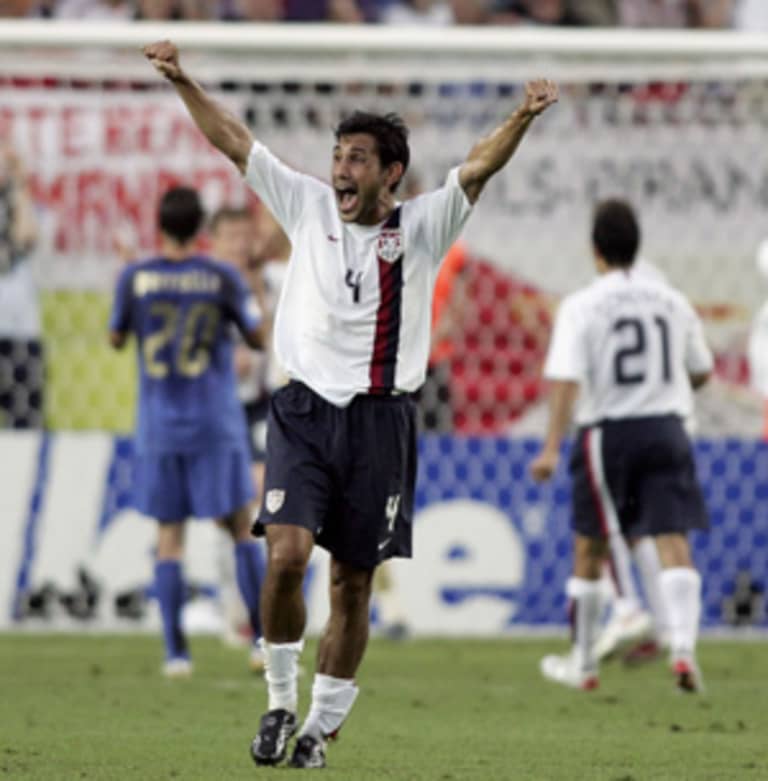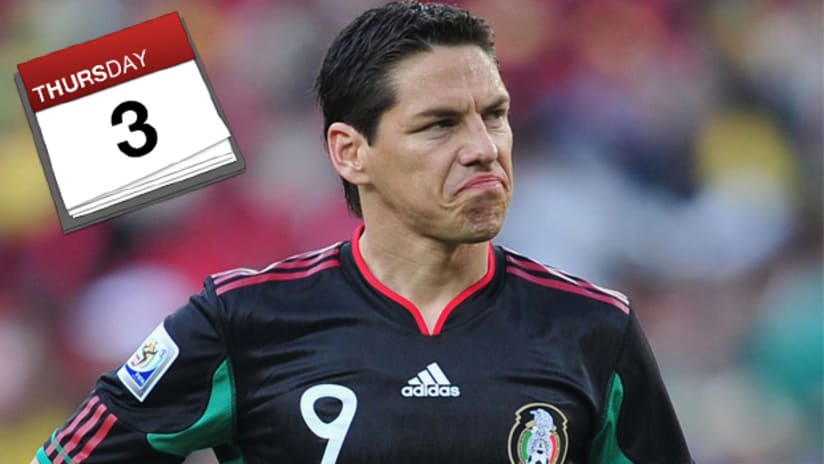Former Mexican international Guillermo Franco is a member of the Chicago Fire now, continuing a proud tradition that stretches all the way back to the days of Jorge Campos.
The diminutive goalkeeper-cum-forward was the first famous El Tri rep to suit up for the Fire, and since then more have followed: Cuauhtémoc Blanco, of course, spent several productive years with the team; Nery Castillo was ... we’ll be kind and say “somewhat less” productive; and Pável Pardo, one of the all-time greats in CONCACAF, is currently an integral part of what may be the league’s most underrated midfield.
The 35-year-old Franco, who scored eight goals in 25 appearances in green, is also part of another proud tradition: Argentine-born footballers who’ve been naturalized by other countries and gone on to represent them at the World Cup. Franco signed on with Monterrey in 2002, got his Mexican citizenship in 2004 and, two years later, played for El Tri in the World Cup in Germany.
It’s a tradition nearly as old as the World Cup itself. Way back in 1934 and 1938, when Italy won the second and third World Cups, the backbone of their squad was formed largely by Argentine ex-pats. And teams throughout the world have been littered with Argentine talent ever since.
Complete Three for Thursday archive
Here are three of the most recent –and most successful:
1. Mauro Camoranesi – The Italians have such a lengthy history of poaching the talent of other countries that they actually have a word for it: oriundi. Camoranesi spent most of his younger days as a journeyman attacker, only coming into his own after a 2002 move to Juventus slotted him permanently at right midfield.
His club career took off, and Azzurri head coach Giovanni Trappatoni noticed. Italy approached him first, and for Camoranesi … well, that was that.
He played 55 times for his adopted nation, most famously as part of the team that won the 2006 World Cup. Amusingly, the biggest splash he made in that tournament was when he admitted he didn’t sing the Italian national anthem before the games because he didn’t know the words.
These days, Camoranesi has returned to the country of his birth, playing for Racing.
2. David Trézéguet – OK, we’ll stretch the definition for Trez: He was actually born in Rouen, France, while his father was a defender for the local side. But Trézéguet and family moved back to Buenos Aires when young David was still an infant, and that’s where he grew up.
He grew up well, of course, and by the time he was a teenager he had his choice of national teams. At the time – the mid-‘90s – it was thought that he was a lock for Argentina as the heir to the great Gabriel Batistuta for the go-to striker role, and also since he’d spent his entire life there.
But at age 16, he chose France, becoming a record-breaking goal scorer for the U-18s and U-20s before finally making the jump to the full national team in 1998. Just two years later, at the age of 22, he provided the golden goal in the final of the 2000 European Championship.
He went on to score 34 goals in total for Les Bleus, and 135 goals as a teammate of Camoranesi with Juventus. Like Camoranesi, he’s now returned to Argentina and is playing for River Plate.
3. Pablo Mastroeni – Born in Argentina, moved with his family to Phoenix at age four. And got his US citizenship just in the nick of time, as far as fans of the Yanks are concerned.

Waaay back in 2002, Chris Armas was the preferred starting defensive midfielder for Bruce Arena’s national team, and it wasn’t really clear who his best backup was. Mastroeni had been a reliable, and often spectacular defender in the Miami Fusion’s 3-5-2, only making cameos in the midfield.
But in the winter of 2001 the Fusion folded, Pablo landed in Colorado and it was clear from the off that he’d be spending the rest of his career as a d-mid. Arena noticed, and once Mastroeni’s citizenship went through just months before the World Cup, it looked like the US had their backup plan.
Then Armas’ knee gave out, and Mastro suddenly became “Plan A.”
If you remember the US performance at the 2002 World Cup, you remember this: The US were much, much better when Mastroeni was out there. He didn’t have the tempo-setting skills of Claudio Reyna or the passing range of John O’Brien, but he was an ideal shield for the backline, keeping both his positioning and distribution simple and always giving the US defense the bit of padding they needed.
So … thanks, Argentina. You gave us a guy who was crucial to our best World Cup run in modern times, while we gave you Chicago School econ theory. Sorry about that. Like Italy, France and Mexico, let’s just say we owe you one.














